Austria
Development challenges as investment and business opportunities: Austria’s policy and practices
Austria uses its official development assistance to catalyse private investment for sustainable development, in line with the strong focus it places on private sector development in its three-year programmes for development co-operation and its Private Sector and Development Guidelines (2010). Austria focuses on private sector development to improve the business-enabling environment in developing countries and to strengthen the market position of small and medium enterprises in partner countries while also partnering with the Austrian/EU private sector. By means of private sector engagement, Austrian Development Co-operation (ADC) intends to create income, strengthen institutions and enhance availability of public goods in partner countries. Moreover, many private sector projects aim at improving social and environmental standards along the international value/supply chain of the European company involved.
Public-private dialogue is promoted through the CorporAID Platform, which is jointly financed by the ADC, the Ministry of Economy and Austrian companies. CorporAID focuses on “business, development and corporate social responsibility”. The 2015 DAC Peer Review of Austria encouraged Austria to develop a broad-based strategy on the role of the private sector in development, with a clear focus on poverty reduction and sustainable development.
Austria engages in private sector development mainly through the operations of the OeEB, the national development finance institution. Its mission is to promote sustainable development (economic, environmental and social) by financing and investing in profitable private sector projects in developing and emerging countries. The OeEB’s key products are investment lending, equity participation and advisory programmes.
Financial flows from Austria to developing countries
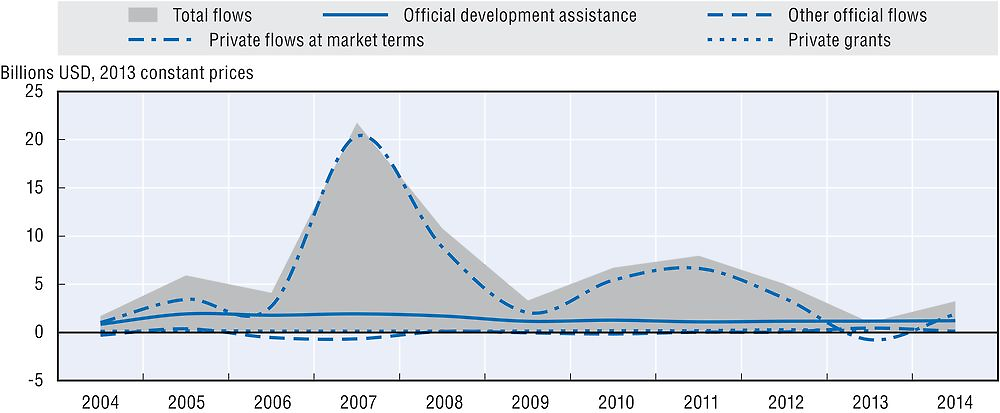
Note: Data on private grants are not available for 2014.
Austria uses ODA to mobilise other resources for sustainable development
-
Austria contributes to the mobilisation of domestic resources in developing countries by supporting their tax systems. Austria supports tax-related activities mainly via its multilateral contributions (e.g. to the EU).
-
It promotes aid for trade to improve developing countries’ trade performance and integration into the world economy. It committed USD 68.6 million to trade-related activities in 2014 (22.6% of its bilateral allocable ODA), a 52.6% decrease in real terms from 2013. The trend has been fluctuating over the past few years.
-
Austria has pledged to provide at least USD 25 million to the Green Climate Fund, which plays a key role in channelling resources to developing countries and catalysing climate finance at the international and national levels.
Austria’s official development assistance
In 2015, Austria provided USD 1.2 billion in net ODA (preliminary data), which represented 0.32% of gross national income (GNI) and a 15.4% increase in real terms from 2014, due to increased spending on in-donor refugee costs. Austria is the 13th largest Development Assistance Committee (DAC) provider in terms of ODA as a percentage of GNI, and the 18th in terms of volume. The Austrian government remains committed to achieving the target of 0.7% ODA/GNI and intends to develop a roadmap to achieve this target. However, the outlook for the ODA budget is mixed – while the 2016 budget increased humanitarian assistance, it is not clear whether overall levels will increase. While Austria’s share of untied ODA (excluding administrative costs and in-donor refugee costs) has increased, from 44.2% in 2013 to 48.2% in 2014, it is still low compared to the 2014 DAC average of 80.6%. The grant element of total ODA was 100% in 2014.
Austria reported USD 109.5 million of its in-donor refugee costs as ODA in 2014. These costs represented 8.9% of its total net ODA.
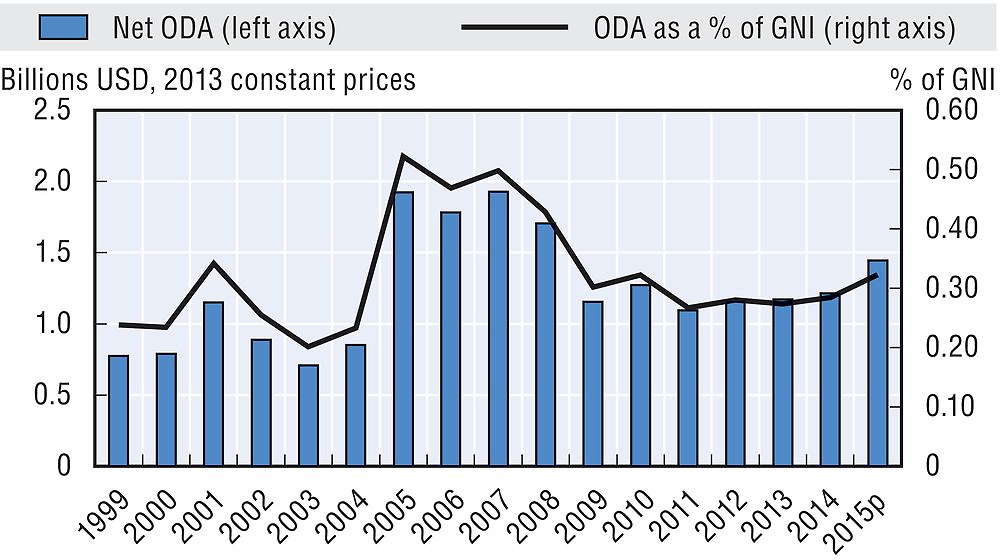
In 2014, 51.8% of Austria’s ODA was provided bilaterally. Austria allocated 48.2% of total ODA as core contributions to multilateral organisations, compared with the DAC country average of 28.3%. In addition, it channelled 13% of its bilateral ODA for specific projects implemented by multilateral organisations (multi-bi/non-core).
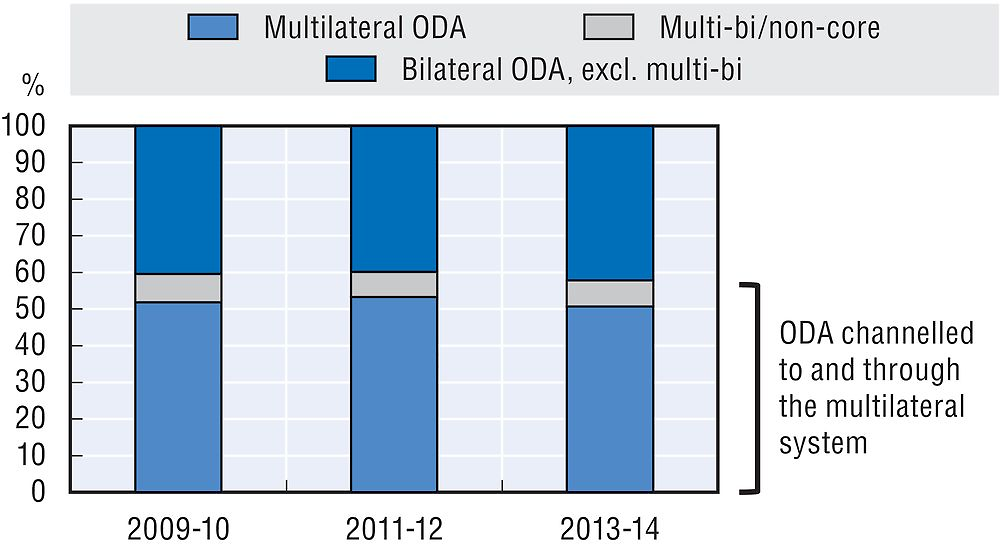
Only 12.9% of Austria’s bilateral ODA was programmed at partner country level in 2014. Austria’s share of country programmable aid (CPA) was low compared to the DAC country average (52.9%) in 2014. Project-type interventions accounted for 53% of CPA; 27% of bilateral ODA was classified as “other and unallocated”.
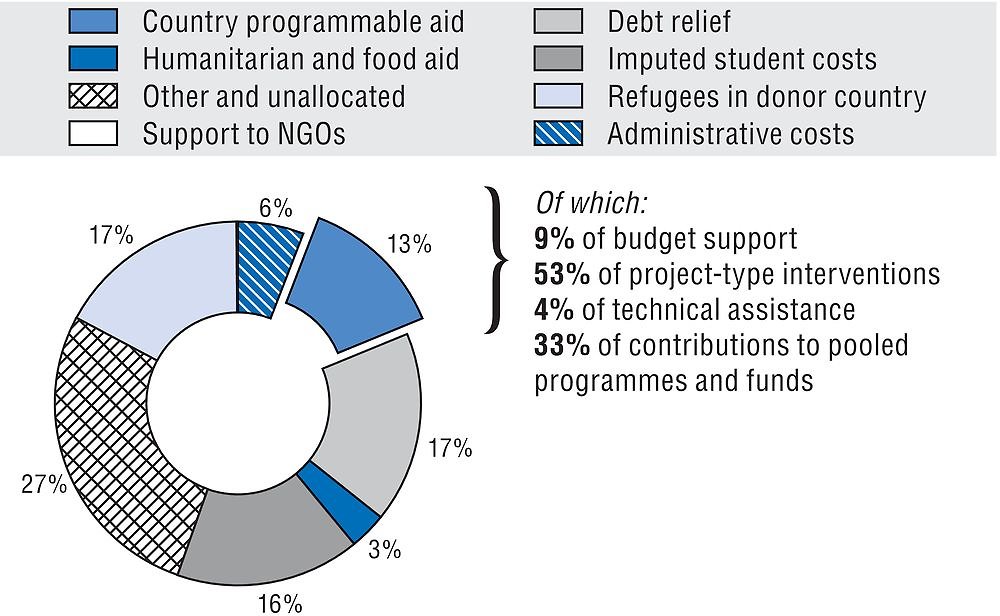
In 2014, USD 68.9 million of bilateral ODA was channelled to and through civil society organisations (CSOs). ODA channelled to and through CSOs increased by 26.1% in volume compared to 2013. As a share of bilateral ODA, support for CSOs increased from 9.8% in 2013 to 10.7% in 2014. The DAC average was 17.4%.
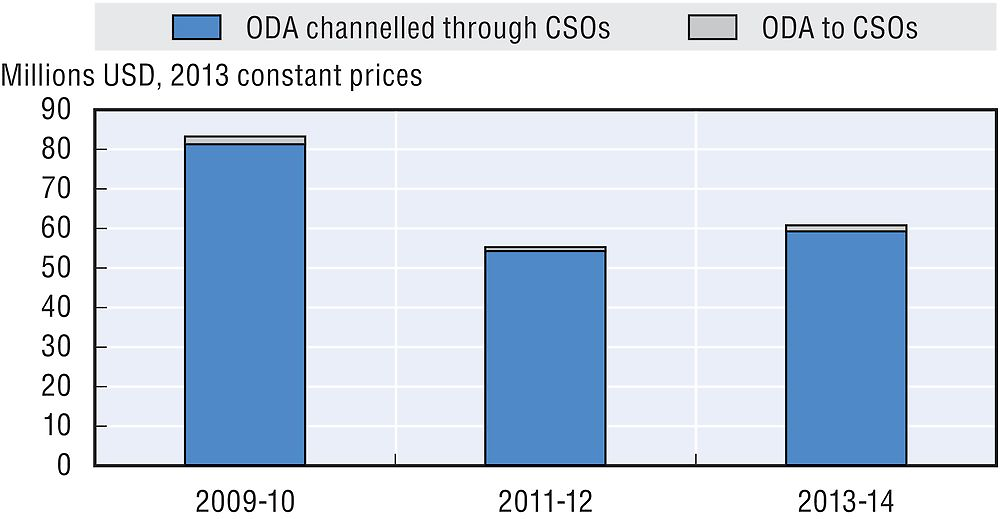
In 2014, bilateral ODA was primarily focused on south and central Asia, Eastern Europe, and sub-Saharan Africa, representing USD 156.3 million to south and central Asia, USD 126.8 million to Eastern Europe, and USD 64.8 million to sub-Saharan Africa – ODA to this region has decreased over the last two years.
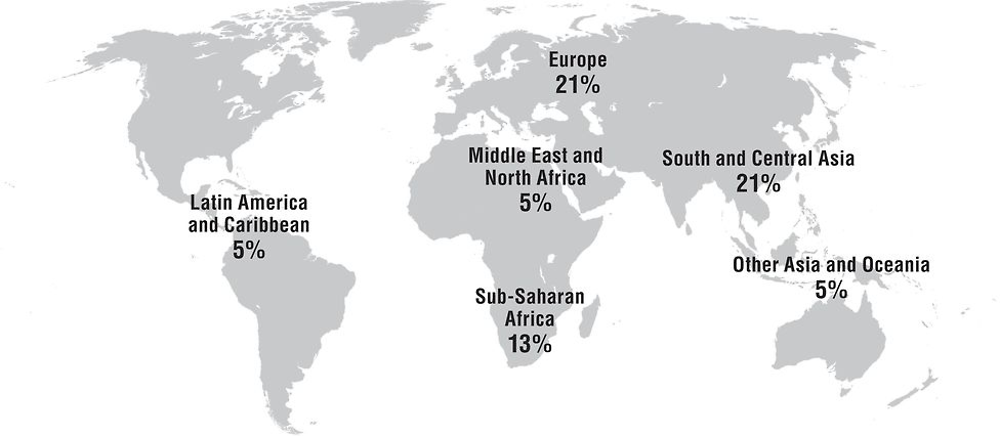
Note: 31% of bilateral ODA allocated was unspecified by region in 2013-14. This share is not represented on the map.
Austria allocated 38.5% of its bilateral ODA to its top 10 recipients. Four of its 11 priority partner countries are among its top 10 recipients (Albania, Ethiopia, Kosovo and Uganda). Austria’s support to fragile states reached USD 203 million in 2014 (31.7% of gross bilateral ODA).
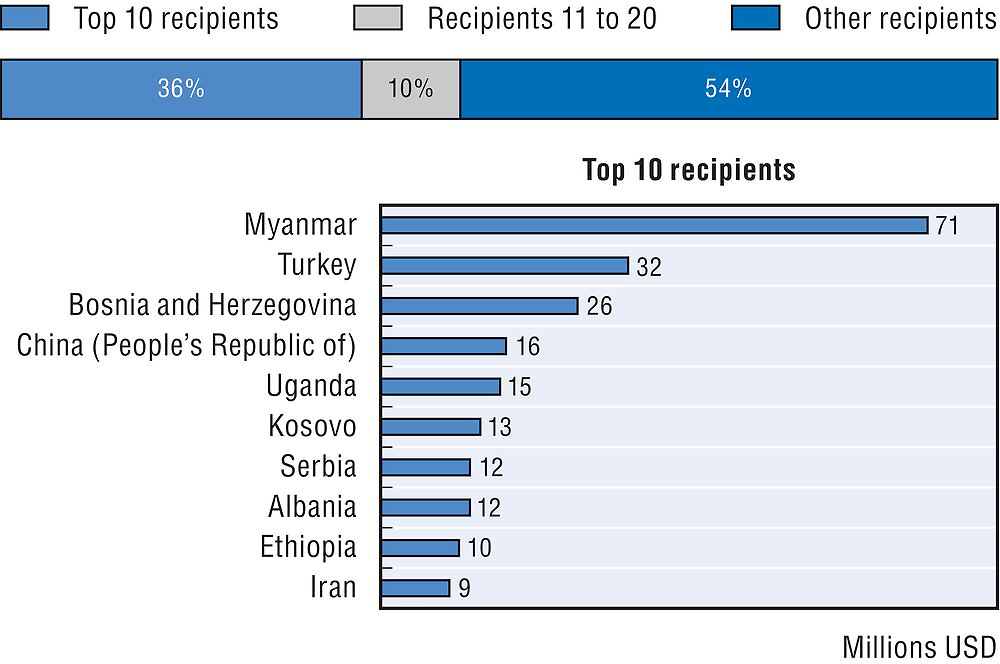
In 2014, 24.9% of Austria’s bilateral ODA was allocated to least developed countries (LDCs), amounting to USD 159.8 million and only slightly below the 2014 DAC average of 25.6%. As a share of bilateral ODA, aid to LDCs has increased since 2012, when it was 10.6%. LDCs received the highest share of bilateral ODA in 2014, noting that 40.1% was unallocated by income group.
At 0.08% of GNI in 2014, Austria’s total ODA to LDCs was less than the UN target of 0.15% of GNI.
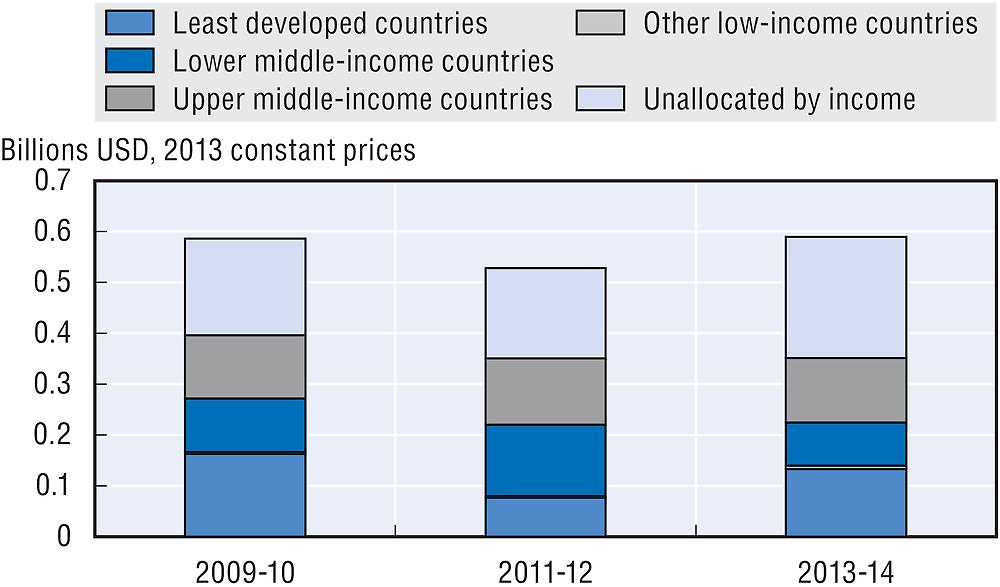
In 2014, 41.4% of bilateral ODA was allocated to social infrastructure and services. A total of USD 278.6 million of bilateral ODA was allocated to social sectors, with a strong focus on support to education (USD 168.4 million) and health (USD 40.1 million). Debt relief amounted to USD 106.8 million.

USD 88.9 million of bilateral ODA supported gender equality in 2014. Support for gender equality is a priority cross-cutting issue for Austrian development co-operation. The 2015 DAC Peer Review recommended that Austria clarify its priorities for mainstreaming cross-cutting themes, and ensure that it has the tools and resources to follow through on these priorities. In 2014, 29.3% of bilateral allocable aid had gender equality and women’s empowerment as a principal or significant objective. This is an increase over 2013, when it was 24.8%, but is lower than the share in 2009 (32.5%) and the DAC country average of 34.7% in 2014. Austria’s aid to population and reproductive health focuses on gender.
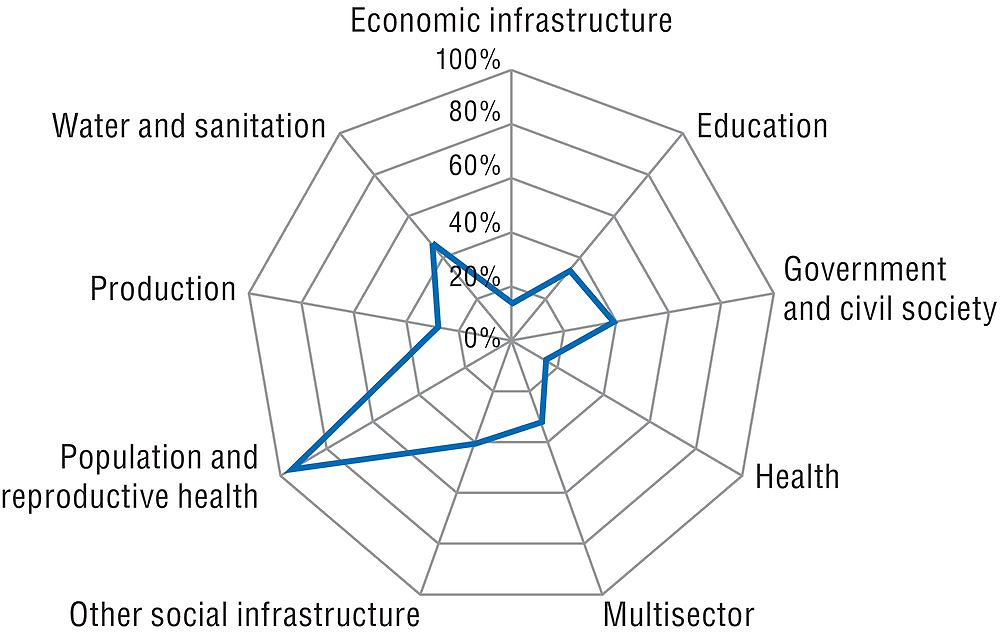
USD 77.3 million of bilateral ODA supported the environment in 2014. Tackling global environmental issues is a top priority for Austria, although mainstreaming the environment throughout the programme remains work in progress and Austria needs to ensure that it has the tools and resources to follow through on these priorities. In 2014, 25.5% of its bilateral allocable aid focused on the environment and 21.1% (USD 63.9 million) focused particularly on climate change, compared with the respective DAC country averages of 32.2% and 23.9%.
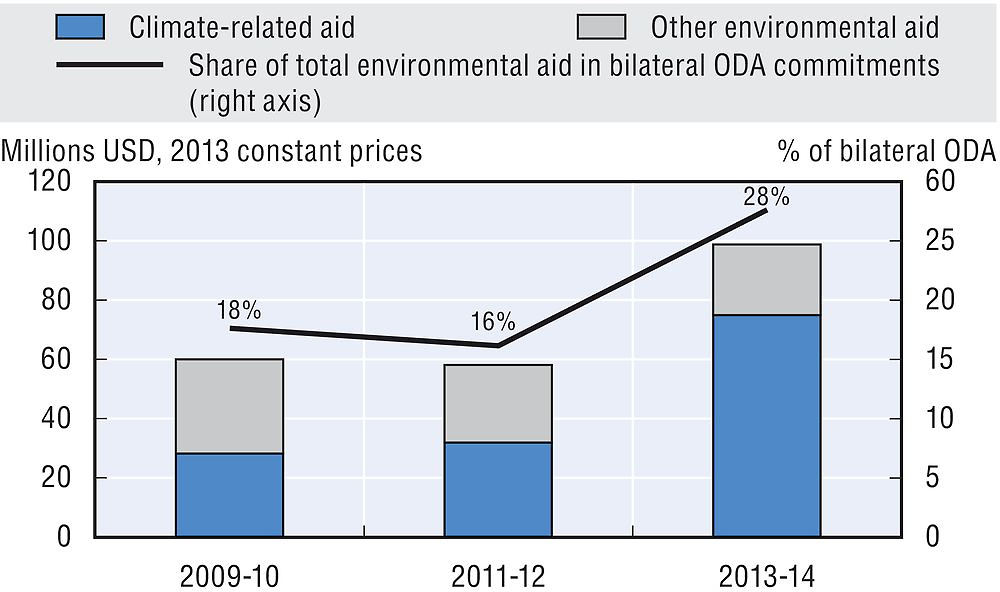
Note to reader: Annex B provides “Methodological notes on definitions and measurement for the Profiles of Development Assistance Committee members”.
Reference
OECD (2015), OECD Development Co-operation Peer Reviews: Austria 2015, OECD Development Co-operation Peer Reviews, OECD Publishing, Paris, https://doi.org/10.1787/9789264227958-en.
